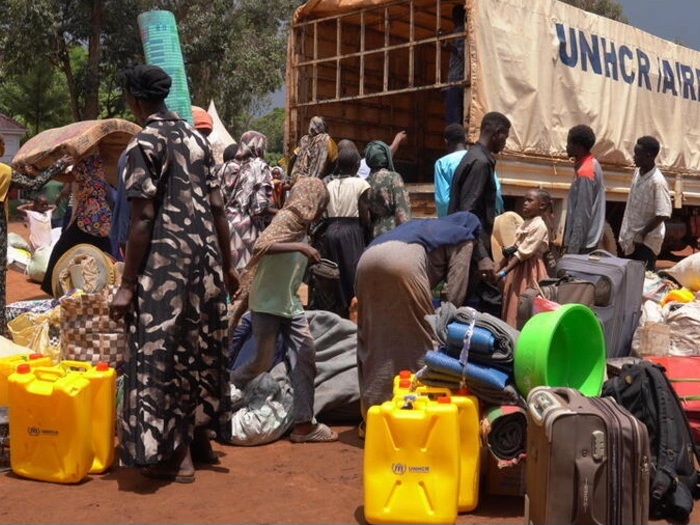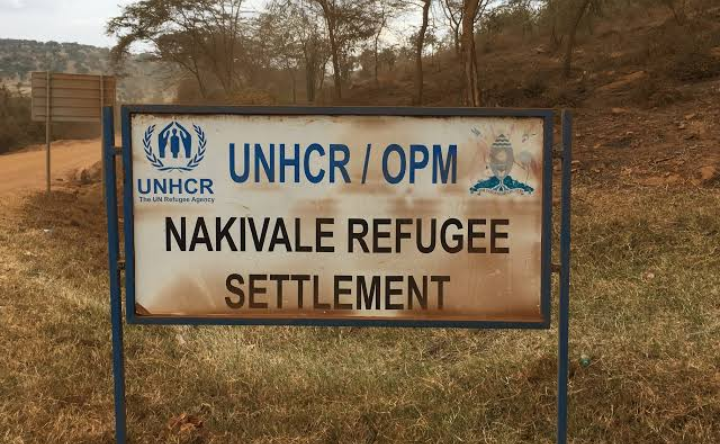By ABDIYARE SALAD ALI & TESFA-ALEM TEKLE
East Africa has become a focal point in global refugee affairs, with millions of displaced people seeking safety in countries such as Uganda, Kenya, Ethiopia, and Tanzania.
These host nations carry both the humanitarian responsibility and the political burden of accommodating some of the world’s most vulnerable populations.
While refugees contribute economically and culturally to their host societies, tensions inevitably arise, particularly around competition for resources, cultural integration, and security concerns.
Economic Impacts: Strain and Opportunity
One of the clearest areas where refugees and host communities interact is in the economy. On the one hand, refugees can put pressure on already limited resources.
Uganda, which hosts more than 1.6 million refugees, has experienced strains on public services like health, education, and water.
Local residents often complain that aid disproportionately targets refugees, leaving host communities feeling overlooked.
Yet, the other side of the picture is just as important. Refugees contribute to local markets by renting land, buying goods, and starting businesses.
Landlords in Kampala value them because refugees are usually reliable in paying rent, A 2020 World Bank study noted that in Uganda’s West Nile region, refugee settlements actually boosted trade and increased household incomes for both refugees and locals.
In Kakuma, Kenya, a refugee camp that has existed for over 30 years, businesses owned by displaced people generate millions of dollars in annual revenue. In Kakuma and Lodwar, Somali refugees and Turkana locals are turning necessity into enterprise.
Somalis, with their trucks and trading skills, team up with Turkana partners who know the terrain and local networks.
Together they run small transport businesses—hauling food, livestock, and building supplies, sometimes even landing contracts with aid agencies.
What began as a way to survive has grown into a partnership that keeps both communities moving forward.
These examples show that refugees are not merely passive recipients of aid but active participants in local economies.
Cultural Differences and Social Relations
Culture plays a complex role in refuge host interaction, Eritrean and Ethiopian refugees in Uganda, for instance, have been stigmatized for allegedly keeping to themselves.
Locals sometimes accuse them of being reluctant to intermarry a perception that fuels mistrust.
Such stereotypes overlook the difficulties refugees face in rebuilding trust after trauma, as well as the natural desire to preserve cultural identity in a foreign land.
Still, cultural exchange does occur. Refugee youth often attend the same schools as local children, and markets become spaces of interaction where food, clothing styles, and music cross boundaries.
These everyday interactions, though often overlooked, help weave fragile threads of coexistence.
Security Concerns: Narratives and Misconceptions
Security is perhaps the most politically charged dimension of refugee-host relations.
Governments frequently frame refugees through the lens of security risks. In Kenya, camps like Dadaab have been accused of harboring militants.
In Uganda, where over 500,000 Congolese refugees are hosted, authorities have voiced concerns that rebel groups from eastern Democratic Republic of Congo could try to exploit settlements for recruitment or influence.
While such fears exist, UNHCR and independent observers stress that the overwhelming majority of Congolese refugees are victims, not participants, in these conflicts.
Ethiopia faces its own version of this dilemma Authorities there have raised concerns that Eritrean refugees inside Ethiopia could act as spies for Asmara’s government.
Refugees strongly reject this label, explaining that they fled precisely because of repression, indefinite military conscription, and lack of freedom.
Human rights groups warn that stigmatizing refugees in this way risks undermining integration and increasing fear between communities.
The broader truth is that refugees are often targets of insecurity rather than sources of it.
While governments are right to safeguard their borders, a balanced approach is needed—one that prevents infiltration by armed groups but does not criminalize entire refugee communities.
Stories of Cooperation
Despite tensions, there are many examples of solidarity between refugees and host populations.
In northern Uganda, local families have shared land with South Sudanese refugees under government-backed programs.
This has not only provided farmland for food production but also strengthened inter-community ties.
In Tanzania, Burundian refugees who fled during the civil war in the 1990s gradually integrated into rural communities, contributing to agriculture and marrying into local families.
Though Tanzania has since adopted a stricter refugee policy, the history of integration shows that long-term coexistence is possible when policies and social conditions align.
Religious institutions and civil society groups also play a quiet but crucial role.
Churches and mosques often become meeting points where refugees and locals share humanitarian support, spiritual guidance, and social activities.
These initiatives show that relations are not defined only by conflict but also by cooperation and shared humanity.
The Role of Policy and Perception
Policy frameworks shape how host-refugee relations evolve.
Uganda is often praised for its progressive refugee policy, granting the right to work, move freely, and access services.
This openness has allowed refugees to contribute economically and socially, though challenges remain.
In contrast, more restrictive approaches, such as encampment policies in Kenya, have limited opportunities for interaction, Refugees are generally not allowed to work freely, move outside the camp without permits sometimes reinforcing stereotypes of refugees as outsiders.
Perception is equally powerful. When refugees are seen as a burden, tensions rise. When they are recognized as contributors, coexistence improves.
Media coverage, political rhetoric, and international support all influence these perceptions. Host communities that feel neglected by aid agencies are more likely to view refugees as competitors rather than neighbors.
Conclusion: Building Bridges in Times of Displacement
Refugee-host relations in East Africa reflect both the best and worst of human response to crisis.
Economic opportunity, cultural exchange, and stories of solidarity highlight the potential for coexistence.
At the same time, fears around resources, cultural integration, and security show the fragility of these relationships.
The challenge for governments, aid agencies, and civil society is to manage these dynamics fairly. Refugees should not be romanticized as saviors of local economies, nor vilified as security threats.
They are people—fleeing war, persecution, and poverty—trying to rebuild their lives. Host communities, themselves often struggling with poverty and underdevelopment, deserve support too.
A balanced approach that combines humanitarian assistance with development investment, while challenging harmful stereotypes, offers the best path forward.
In the end, refugee-host relations in East Africa are not just about survival—they are about the possibility of building shared futures in some of the world’s most fragile settings.



